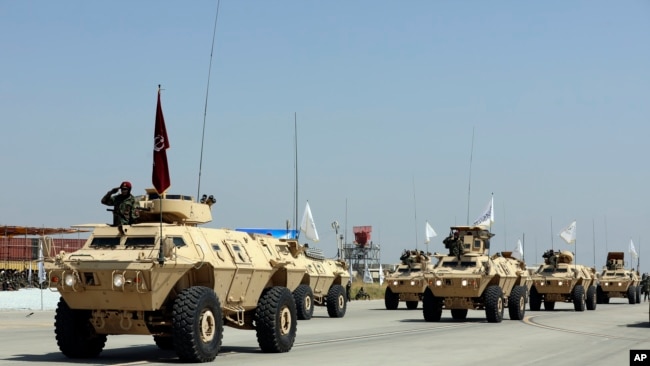Note there is no mention of Iran and it’s advance toward a viable delivery of the weapon. Just a couple of weeks ago –>
US Secretary of State Antony Blinken on Friday said that Iran’s breakout time – the amount of time needed to produce enough weapons grade material for a nuclear weapon – “is now probably one or two weeks” as Tehran has continued to develop its nuclear program.
The assessment marks the shortest breakout time that US officials have ever referenced and comes as Iran has taken steps in recent months to boost its production of fissile material.
“Where we are now is not in a good place,” the top US diplomat said at the Aspen Security Forum Friday.
“Iran, because the nuclear agreement was thrown out, instead of being at least a year away from having the breakout capacity of producing fissile material for a nuclear weapon, is now probably one or two weeks away from doing that,” he said.
“They haven’t produced a weapon itself, but that’s something of course that we track very, very carefully,” Blinken added.
Blinken said the policy of the US is to prevent Iran from getting a nuclear weapon, and that the administration would prefer to stop that from happening through diplomacy.
Over a year ago a top US Defense Department official said that Iran could now produce “one bomb’s worth of fissile material” in “about 12 days.”
The Biden administration engaged in more than a year of indirect negotiations with Iran aimed at reviving the Iran nuclear deal, from which the US withdrew in 2018 under the Trump administration.
Those efforts collapsed in late 2022, as the US accused Iran of making “unreasonable” demands related to a probe by the International Atomic Energy Agency (IAEA), a UN nuclear watchdog, into unexplained traces of uranium found at undisclosed Iranian sites. In the months that followed, the administration maintained that the Iran nuclear deal was “not on the agenda.”
President Biden has reportedly altered the U.S. strategic nuclear plans toward opposing China’s burgeoning nuclear arsenal and preparing for possible nuclear coordination between China, Russia and North Korea.
According to a report Tuesday evening in The New York Times, the highly classified “Nuclear Employment Guidance” was altered in March without any public announcement.
“The document, updated every four years or so, is so highly classified that there are no electronic copies, only a small number of hard copies distributed to a few national security officials and Pentagon commanders,” the Times reported.
Congress is expected to be notified of the changes in unclassified form before Mr. Biden’s term in the White House ends in January.
But, The Times reported, two separate top officials have received permission to refer to the changes in public speeches, albeit only in “carefully constrained, single sentences.”
“The president recently issued updated nuclear-weapons employment guidance to account for multiple nuclear-armed adversaries,” said Vipin Narang, a Massachusetts Institute of Technology nuclear strategist who served in the Pentagon.
“In particular,” he added, the guidance reacted to “the significant increase in the size and diversity” of China’s nuclear arsenal.
Pranay Vaddi, the National Security Council’s senior director for arms control and nonproliferation, referred to the document in June, saying it emphasizes “the need to deter Russia, the PRC and North Korea simultaneously,” using the acronym for the People’s Republic of China.
Pentagon officials have warned for years about a nuclear-arsenal breakout from China.
Although Beijing has had nuclear weapons since the 1960s, for decades it had only a minimal deterrent force that barely measured up to the arsenals of Britain and France, much less those of the U.S. or the Soviet Union/Russia.
But the commander of U.S. Strategic Command, Air Force Gen. Anthony Cotton, testified to Congress in February that the size and rapid pace of Beijing’s nuclear buildup is “breathtaking.”
Current Chinese strategic stockpiles are estimated to be around 500 warheads and will increase to as many as 1,500 by 2030, with the most dramatic move being the building of more than 300 intercontinental ballistic missile silos in western China.















